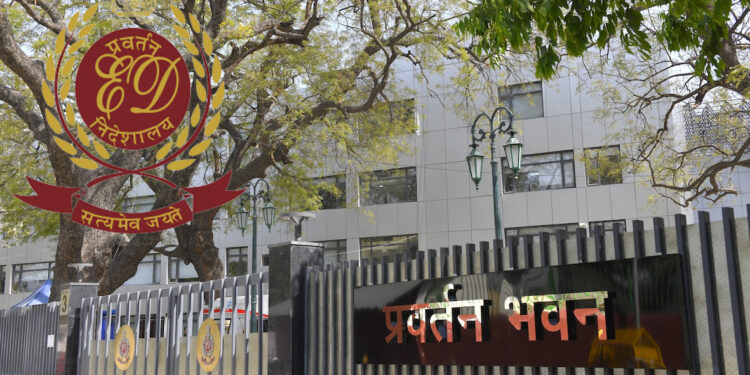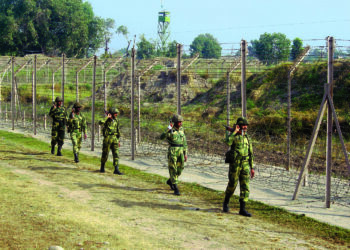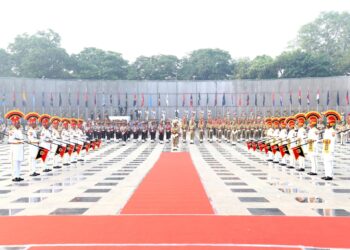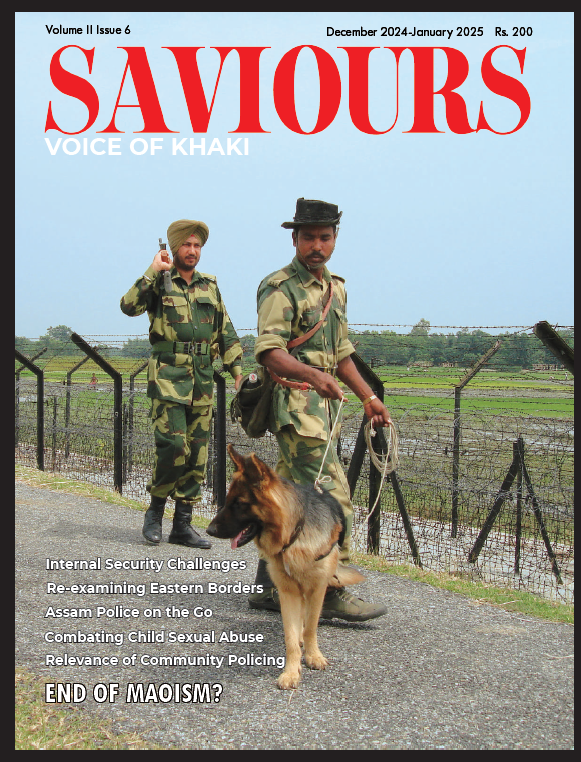Karnal Singh, the former Director of the Enforcement Directorate, explains how the Prevention of Money Laundering Act functions. He takes the reader through the evolution of global measures against money laundering and the creation of international institutions. He also dispels a number of misgivings about the Act and its provisions.
The article will be of immense use to the general reader Police Officers, and other wings of the criminal justice system
Money Laundering: How Dirty Money Gets “Clean”
Money laundering is the art and crime of turning illegal earnings into money that appears legal. Criminals take ill-gotten gains and pass them through a chain of financial moves so that, on paper, the money seems to have come from a legitimate source. The object is not merely to hide cash; it is to sanitise its identity so that it can be banked, invested, pledged, spent, or inherited without raising alarms.
Illicit money comes in many shades, a useful shorthand that captures both origin and legal risk:
- Pink Money – proceeds from drug trafficking and narcotics networks.
- Red Money – proceeds from crimes other than drugs, such as extortion, illegal arms trade, organised betting, human trafficking, cybercrime, or wildlife offences.
- Black Money – money earned lawfully but concealed to evade taxes or regulatory scrutiny.
- White Money – entirely legitimate, accounted income that has been declared and taxed.
The aim of laundering is simple: turn the “dirty” shades into pure white, without leaving fingerprints.
Origin of the Term “Money Laundering”
The expression draws a deliberate parallel to washing clothes: as stains are removed from fabric, the “stain” of criminal origin is scrubbed from cash flows. Popular retellings trace the phrase to the Prohibition era (1920–1933) in the United States. With liquor sales outlawed, bootlegging flourished and organised crime amassed mountains of cash. The Chicago mobster Al Capone is frequently cited: he and his associates allegedly mingled cash from illicit liquor with receipts from coin-operated laundromats and other cash-heavy businesses. Investigators later noticed outlets reporting suspiciously high takings relative to their capacity. Whether or not laundromats were the original vehicle, the metaphor stuck: passing illegal money through apparently honest enterprises to make it look clean.
Before we can address laundering, we must understand where ill-gotten money comes from. These funds originate from a wide range of criminal activities. In some countries, including India, tax evasion is not itself a scheduled offence under the PMLA, yet in practice, it is a major contributor to pools of undeclared cash that are later laundered. Other common sources include fraud (deceit for financial gain), embezzlement (misappropriation of entrusted funds), theft and robbery, bribery (improper payments to influence decisions), corruption (abuse of public office for private gain), and a long tail of offences from illegal mining to intellectual property crime.
Money Laundering– A Three-Stage Process
Money laundering typically follows a three-stage arc: Placement, Layering, and Integration. Understanding these stages helps investigators anticipate how illicit value moves and where controls can interrupt it.
Placement – Introducing Illegal Money into the Financial System
Illicit cash is first injected into the legitimate economy. Common techniques include:
- Breaking up large sums into small deposits to avoid reporting thresholds (structuring/smurfing).
- Swapping denominations or currencies using money changers.
- Purchasing high-value assets—land, houses, vehicles, precious stones—using a mix of accounted (“white”) funds and unaccounted cash (for instance, 60% by cheque and 40% in cash).
Placement is the riskiest phase for criminals; cash is conspicuous and, when asked for a source, the launderer must produce a plausible origin story.
Layering – Distancing the Money from its Criminal Origin
The goal here is to obscure the trail. Launderers construct complex, multi-step transactions across accounts, entities, and often jurisdictions. Examples:
- Buy Property A, sell it quickly, purchase B and C; then sell B and leverage a loan to buy D. Each step introduces distance and paperwork.
- Record fake sales in a shell company to justify unexplained deposits as “revenue”.
- Ping-pong funds across banks and borders, using shells, fronts, trusts, and offshore vehicles to break audit continuity.
Every additional transaction forms another layer between the money and the underlying crime, making the paper trail colder with time.
Integration – Making the Money Appear Legitimate
After sufficient layers, illicit funds re-enter the economy as apparently clean capital:
- Invested in businesses, real estate developments, securities, or start-ups.
- Used to purchase luxury goods or to extend loans that will be “repaid” from clean sources.
- Reflected in documentation that passes routine scrutiny.
At this point, forensic reconstruction is difficult and expensive; the linkage to the original offence can be almost invisible without early-stage intelligence.
Inside the Shadow Economy: How Money Laundering Works Within and Across Borders?
Money laundering is not a single trick. It is an adaptive toolkit—a set of methods chosen to fit the offender’s risk appetite, political protection, and access to professionals and financial infrastructure. Law-enforcement agencies, therefore, classify laundering by geometry and geography: domestic, international, inbound, outbound, and flow-through operations.
Each type poses distinct investigative challenges.
Domestic Laundering: Crime and Cleaning at Home
Domestic laundering occurs when the predicate offence and the cleansing both happen within the same country. Consider the case of a public servant taking a bribe. The cash is routed to a financial hub—say, Kolkata—then atomised into hundreds of shell companies. Each shell opens an account, receives small credits, and forwards funds to “downstream” entities.
Eventually, two or three “apex” companies accumulate the money. The masterstroke: those apex companies buy shares of a business owned by the official’s relatives—₹10 face value shares purchased at ₹5,000 each. Months later, the relatives’ company buys back the same shares at ₹2. On paper, these are market transactions; in substance, they convert bribe money into clean shareholder capital parked with family.
International Laundering: Crossing Borders to Hide Trails
Here, crime money exits the country, is “cleaned” offshore, and returns as lawful capital. The classic Bank of Baroda case involved about ₹3,600 crore allegedly remitted to Hong Kong as “advance payments for imports” that never happened. Later, value flowed back through over-invoiced exports, even exploiting duty drawback incentives. International laundering thrives on hawala networks, over-/under-invoicing, corporate service providers in secrecy jurisdictions, and the legal fog between tax avoidance and criminal concealment.
Inbound Laundering: Foreign Crime Money in India
In inbound cases, proceeds of crime generated abroad are routed into India for cleansing. The Agusta Westland helicopter deal illustrates the pattern: alleged kickbacks moved through Mauritius, Dubai, Singapore, and Switzerland, and a portion entered India via layered corporate structures and consultancy contracts, while the remainder stayed parked offshore.
Outbound Laundering: Indian Wealth Disappearing Overseas
Here, Indian proceeds are spirited abroad, often beyond quick reach. The Winsome Diamonds affair—over ₹5,900 crore in bank exposure—is emblematic. Loans were purportedly used to buy diamonds from Dubai-based firms that were, in effect, front entities controlled by the same mastermind. No genuine imports were intended. Funds moved, the paper trail thinned, and the principal relocated overseas, later obtaining foreign citizenship. Investigators were left to navigate Letters Rogatory, slow mutual legal assistance, and shifting foreign legal landscapes.
Flow-Through Laundering: India as a Transit Hub
Sometimes India is neither origin nor destination but a conduit. In one Australian narco-case, money moved Australia → Singapore → India → back offshore. Only coordinated work between Australian agencies and Indian authorities revealed the loops created to launder the money.
The Bigger Problem
Domestic laundering leaves footprints; cross-border schemes multiply the investigative cost. Each border crossed adds jurisdictional friction, language barriers, and evidentiary hurdles. Requests for help can take years, and by then, the funds have migrated again. Effective AML, therefore, is as much about international trust and speed as it is about national statutes.
The Economic Fallout of Money Laundering: How Dirty Money Hurts Honest Markets
Money laundering is not a victimless accounting trick. It distorts markets, undermines public finance, and weakens institutions. Its costs are systemic, long-lived, and borne by citizens who never touch a rupee of illicit cash.
Bad Money Drives Out Good Money
Consider two bidders for a government contract:
- Company A uses legitimate capital and must cover costs and earn a margin.
- Company B is a laundering vehicle; it can bid at or below cost because profit isn’t the point—washing the money is.
By undercutting honest pricing, Company B crowds out compliant rivals, erodes quality, and
sets a new “market” price that punishes those who play by the rules.
Capital Flight – Money That Comes Only to Leave
Some argue that any inflow is good inflow. Not so when hot money arrives solely to be laundered and exits immediately. The economy resembles a washing machine: value swirls in, swirls out, with little investment left behind. Real FDI seeks profit; laundering inflows seek camouflage.
International Blacklists and Grey Lists
The Financial Action Task Force (FATF) evaluates national AML/CFT frameworks. Countries with “strategic deficiencies” face grey-listing (enhanced monitoring) or black-listing (counter-measures). The consequences are tangible: higher compliance costs, de-risking by global banks, and dampened investment.
Distortion of Foreign Exchange Markets
Cross-border transfers through hawala and other informal systems bypass central bank visibility. Sudden outflows or inflows unrelated to trade or investment can destabilise forex markets, impair policy signals, and introduce noise into balance-of-payments analytics. Reserve managers then fight shadows rather than data.
Shifting the Tax Burden
Those operating in cash and laundering channels habitually evade taxes. The state must still fund roads, schools, defence, and health; the burden shifts toward compliant taxpayers. In extreme cases, a public sense of unfairness takes root: why should the honest pay more while the dishonest enjoy the same services?
Political and Institutional Corruption
Illicit capital buys influence. If campaign finance relies on tainted funds, policy may be captured to protect those pipelines. Worse, agencies tasked with enforcement can become targets for compromise, whether through bribery, pressure, or patronage. When the public perceives that the rules are applied unequally, faith in institutions erodes—a cost no spreadsheet can measure.
Global Crackdown on Money Laundering: From the Italian Mafia to Modern-Day Laws
Today’s AML architecture is the product of blood, politics, and persistence. It took assassinations in Italy, cartel violence in the Americas, and terror attacks to shift the global mindset from chasing criminals to following their money.
The Mafia’s Reign and a Judge’s Bold Idea
In the 1970s–80s, the Italian Mafia operated with near impunity. Speaking against them was a death sentence. In 1979, a judge who dared to act was assassinated. Public outrage and subsequent inquiries forced a rethink. A group of investigators—most famously the Palermo anti-Mafia pool—made a strategic turn: trace the funds, not just the bullets. With U.S. cooperation, Italy mounted the Maxi Trial, while the Pizza Connection case in America exposed a heroin-for-cash network routed through pizzerias. Over 500 mob figures were convicted across the two matters. The cost was grievous, leading magistrates were murdered in 1992—but a doctrine was born: financial isolation is existential pressure on organised crime.
Birth of the Global Anti-Money Laundering Movement
This shift crystallised in law. The 1988 UN Vienna Convention targeted drug proceeds, seeking to:
- Block traffickers’ access to the financial system.
- Compel information-sharing by banks to law enforcement agencies.
- Promote cross-border cooperation.
By 1997, the UN’s programme against money laundering broadened beyond narcotics to all serious crimes. In parallel, the Basel Statement of Principles urged banks to know their customers and refuse funds linked to crime.
Rise of the FATF and International Standards
In 1989, the Financial Action Task Force (FATF) was established. Its 40 Recommendations—revised over time—set the global benchmark for AML/CFT. Member jurisdictions undergo mutual evaluations; deficiencies can lead to public listing. India joined FATF in 2010 and is also part of FATF-style regional bodies like the Asia/Pacific Group (APG) and Eurasia Group, which coordinate training, typologies, and reviews.
The Palermo Convention and the Egmont Group
The 2000 UN Convention against Transnational Organised Crime (Palermo Convention) delivered the first comprehensive international definition of laundering tied to organised crime, and urged confiscation and cooperation. Meanwhile, national Financial Intelligence Units (FIUs) formed the Egmont Group (India’s FIU joined in 2007), creating a secure platform for intelligence exchange.
Indian Scenario: Prevention of Money Laundering Act: Structure and Key Provisions
India’s decisive legislative step began with the Prevention of Money Laundering Bill (1998), passed as an Act in 2003 and operationalised on 1 July 2005. Since then, it has been amended repeatedly—2005, 2009, 2013, 2015, 2018, 2019—often via Finance Acts, prompting a constitutional debate (now before the Supreme Court) on whether criminal law changes can be enacted through money bills. Regardless of form, the substance has moved in one direction: wider coverage, stronger powers, tighter obligations.
PMLA Established a Robust Institutional Framework to Combat Money Laundering.
FIU-IND, India’s Financial Intelligence Unit, collects, analyses, and disseminates financial intelligence. Inputs arrive in two broad streams:
- Rule-based reports (e.g., CTR thresholds, high-value cash deposits, or specified cross-border transfers).
- Suspicion-based reports (STRs)—filed when institutions spot atypical behaviour (structuring, round-tripping, sudden activity inconsistent with profile), regardless of amount.
FIU disseminates actionable intelligence to the ED, CBI, Income Tax Department, state Police, and other agencies.
Under PMLA, investigation of money laundering cases is the exclusive domain of the Enforcement Directorate
Understanding the Scheme
The process begins with a scheduled offence—the predicate—investigated by the competent agency (Police, CBI, NCB, Forest, Customs, Income Tax, etc.). If the ED suspects that proceeds from such an offence have been laundered, it launches a parallel PMLA probe. The typical sequence:
- Predicate investigation → chargesheet before the Special Court.
- ED investigation in tandem, which may include:
-
- Provisional attachment or freezing of suspect property.
- Adjudication before the Adjudicating Authority to confirm attachment (with appeal to the Appellate Tribunal and then the High Court).
- Prosecution complaint (PMLA’s analogue to a chargesheet) filed before the Special Court.
- Confiscation of property upon conviction for money laundering.
How the Enforcement Directorate Gathers Intelligence and Registers Cases
The ED’s pipeline is multi-source:
- Multi Agency Centre (MAC) within the Intelligence Bureau: aggregates sensitive case intelligence nationwide.
- FIU-IND: forwards STRs/CTRs and typology-based alerts.
- Central Economic Intelligence Bureau (CEIB) and Regional Economic Intelligence Councils (REICs): coordinate trends across tax, customs, ED, and CBI ecosystems.
- State Anti-Money Laundering Liaison Officers: compile state-level cases and feed ED.
- Own development: open-source intelligence, registrar databases, property registries, corporate filings.
When material satisfies statutory thresholds, the ED registers an Enforcement Case Information Report (ECIR) and begins an investigation.
Structure of the PMLA
- Chapter 1 – Preliminary provisions and definitions (Ss. 1–2).
- Chapter 2 – Offence of money laundering (3) and punishment (S. 4).
- Chapter 3 – Attachment, adjudication, and confiscation of property.
- Chapter 4 – Obligations of reporting entities to FIU-IND.
- Chapter 5 – Powers of investigation: summons, searches, seizures.
- Chapter 6 – Appellate Tribunal.
- Chapter 7 – Special Courts.
- Chapter 8 – Authorities under the Act.
- Chapter 9 – Reciprocal assistance with foreign states.
- Chapter 10 – Miscellaneous.
What Constitutes Money Laundering under Section 3 of PMLA?
Any process or activity connected with proceeds of crime, including concealment, possession, acquisition, use, and the act of projecting or claiming such proceeds as untainted property. Both deeds and representations are captured, reflecting that laundering is partly about papering a narrative.
In practice, this spans the primary offender, accomplices, facilitators (including professional enablers), and those who try but fail to complete the Act.
Proceeds of Crime – Definition and Scope
“Proceeds of crime” means any property derived or obtained—directly or indirectly—from criminal activity related to a scheduled offence. If property is held abroad, the equivalent value in India can be attached.
Scheduled Offences
Money laundering is parasitic; it depends on a scheduled offence. The PMLA Schedules include:
- Schedule A – A broad catalogue (e.g., IPC offences, narcotics, unlawful activities).
- Schedule B – Currently, one section of the Customs Act (S. 132)is triggered when the value exceeds ₹ one crore.
- Schedule C – Offences with cross-border implications (crime in India with proceeds moved abroad, or crime abroad that is also a crime in India with proceeds brought in).
Initiation of ED Proceedings
Unlike the police, the ED records an ECIR, not an FIR. The statute does not require the ECIR to be provided to the accused, and ED frequently declines to share it, a stance that has survived judicial scrutiny in several matters.
PMLA is Continuing Offence
Laundering is a continuing offence: it persists for as long as the person enjoys or holds the proceeds, directly or indirectly. This allows action even when the predicate crime is old (e.g., property from a 2002 offence still held in 2019).
Punishment for Money Laundering Offences—Section 4
Imprisonment of three to seven years plus fine; where the predicate relates to NDPS, imprisonment may extend to ten years.
Who can investigate under PMLA – Section 48
The Enforcement Directorate is the exclusive investigative agency. Section 48 identifies the chain of Authority—Director down to Assistant Director and other appointed officers. Other agencies cannot investigate PMLA offences, though they pursue the predicate.
Key Investigation Processes Under PMLA
Survey – Section 16
If an ED officer has reason to believe that relevant documents, money, or material are at a location, they may survey:
- Inspect and copy records; mark documents; inventory items; record statements.
- No seizure/freezing is permitted at this stage.
- Reasons for the survey must be promptly reported to the Adjudicating Authority—an oversight body distinct from criminal courts.
Search of Premises – Section 17
A Deputy Director (or above) must record reasons to believe before authorising a search. During a search, officers may:
- Seize documents and property.
- Freeze property that cannot be physically seized.
- Record statements of persons present.
Post-search: grounds must be reported to the Adjudicating Authority (AA) immediately. ED must send the Original Application within 30 days of freezing to the (AA).
Search of a Person – Section 18
Mirroring NDPS safeguards, the officer must record reasons. The person can request a search before a gazetted officer or magistrate.
Summons and Statements – Section 50
Section 50 empowers information-gathering:
- Sub-section (1): FIU-IND Director may call for information from reporting institutions.
- Sub-sections (2)–(4): ED officers can summon individuals to testify or produce documents.
Statements under S. 50 are treated as judicial proceedings for IPC Ss. 193 (perjury) and
228; falsehood or obstruction attracts a penalty.
Legal Debate: Self-Incrimination vs. Duty to Speak the Truth
Article 20(3) of the Constitution protects against self-incrimination; Section 50 requires the summoned person to state the truth. Two recurring controversies are:
- Whether “truth” is what the officer believes or what the witness knows, and
- Whether asserting constitutional silence equals “non-cooperation”. In practice, ED has occasionally cited non-cooperation as a ground for arrest, a stance that continues to be argued in courts.
Section 19 – Power of Arrest
If an ED officer has reason to believe (based on material) that a person is guilty of laundering, he may arrest the person. Grounds of arrest must be communicated to the person and forwarded to the Adjudicating Authority. This “reason to believe” is not a judicial finding of guilt; it is an investigative threshold subject to later scrutiny.
Section 45: Stringent Bail Conditions—The Twin Test
Bail under PMLA is stringent. Two conditions apply:
- The Public Prosecutor must be heard.
- The court must be satisfied there are reasonable grounds to believe the accused is not guilty.
These “twin conditions,” similar to UAPA and NDPS, make bail difficult.
PMLA offences are labelled cognisable and non-bailable under S. 45, but the power to arrest rests with ED, not Police under the CrPC; the procedures are therefore not identical to generic cognisable cases. Further, the Special Court takes cognisance only on a written complaint by an ED officer, underlining ED’s exclusive domain.
Section 65: Application of CrPC Procedures
CrPC provisions apply to PMLA proceedings unless inconsistent with PMLA. This clause guides courts and investigators on procedural defaults and gaps.
Section 71 gives the Act an overriding effect in case of conflict between PMLA and any other law.
Section 5: Attachment of Proceeds of Crime under PMLA: How the Law Works?
ED may provisionally attach property if there is reason to believe—based on material—that it represents proceeds of crime. Ordinarily, attachment follows a chargesheet in the predicate offence, but if waiting would frustrate the process (risk of disposal/transfer), the IO may attach earlier. Attachment is a preventive leash to stop dissipation.
Section 8: Role of the Adjudicating Authority
After attachment, seizure or freezing, ED must promptly inform the Adjudicating Authority and, within 30 days, file the original complaint/ original application. The person whose property is attached is served a copy. The Authority has 180 days to decide; if it does not confirm, the attachment lapses. If confirmed, ED may take possession—a powerful restraint, as the property then cannot be leveraged even for legal defence.
Confiscation after Trial
The property remains under ED’s control until the Special Court decides the PMLA case. On conviction, the court orders confiscation (S. 8(5)) and the property vests in the Central Government. On acquittal, release follows (S. 8(6)).
Section 8(8) Amendments for Victim Relief
This section enables courts to restore property to victims at the conclusion of trial and, in some instances, during trial if satisfied of a prima facie case. This policy pivot recognises victims’ interests alongside the sovereign interest in confiscation.
Section 26: Appeal against the orders of Adjudicating Authority
Aggrieved parties—ED or the person affected—may appeal to the Appellate Tribunal. From there, an appeal lies to the High Court under Section 42, typically on questions of law.
Section 23 – Interconnected Transactions
Where laundering involves interconnected transactions, and at least one is proven to be involved in laundering, the statute presumes the others are part of the laundering chain. This prevents offenders from hiding illicit value in an ocean of micro-transactions.
Section 24 – Reverse Burden of Proof
A notable deviation from ordinary criminal law. Once ED establishes that a person generated or possesses proceeds of crime and attaches the property, the burden shifts to the accused to prove that the property is untainted. This reverse onus is a powerful enforcement lever.
Section 44 – Trial Before the Special Court
After the ED completes the investigation, it files a prosecution complaint before the Special Court. The statute envisages that the predicate offence also be tried by the same Special Court; if it is pending elsewhere, the Special Court may call for transfer. Importantly:
- The two cases are not a joint trial; they are independent, but heard in the same court for coherence.
- Explanation—Part 1 clarifies that PMLA jurisdiction does not depend on orders in the predicate case; PMLA proceedings may continue regardless.
- Explanation—Part 2 clarifies that “complaint” includes supplementary complaints, allowing ED to file additional material discovered later.
High-Risk Sectors for Money Laundering – An Overview
PMLA enforcement shows discernible patterns in predicate offences and laundering channels:
- Cheating and Fraud: Roughly 39% of ED cases, but an outsized ~69% of total recorded proceeds, making financial frauds the largest contributor to laundered value.
- Corruption: About 19% of cases and ~27% of proceeds, reflecting the high-value nature of graft and kickbacks.
Key Channels Used for Laundering Funds
- Banking Sector – In roughly 45% of matters, misuse of accounts, trade finance, correspondent relationships, and shell companies facilitates layering and integration.
- Real Estate – Around 36% of cases involve property, reflecting land’s capacity to store value quietly, absorb cash, and provide plausible paper trails.
- Precious Metals and Stones – Jewellery and bullion enable high value-to-weight movement, can be re-invoiced easily across borders, and can be pawned or melted to erase provenance.
These patterns argue for targeted controls: trade-based money laundering analytics, digitised land records, invoice verification systems, and tighter KYC/beneficial ownership checks for high-risk DNFBPs (dealers in precious metals, real estate developers, accountants, and— now—virtual asset service providers).








